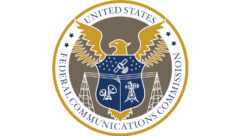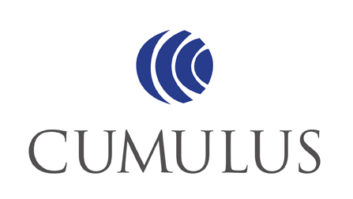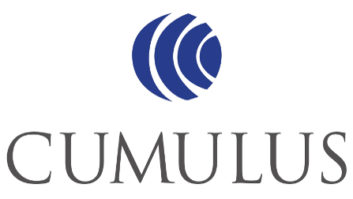A recent Friday marked the formal end of term for the chairman of the FCC, Julius Genachowski. I would would be remiss not to take a few moments to reflect on his term at the commission, which was marked by rapid change in the broadcast and telecommunications industry.
Genachowski was appointed chairman in January 2009 by a newly-elected President Obama. Genachowski’s experience included working under Reed Hunt, another FCC chairman, from 1994 to 1997. However, in spite of this involvement, the last four years have been unlike previous terms, at least from a broadcast perspective.
THE BROADBAND COMMISSION
Julius Genachowski came to the FCC with the stated goal to improve the broadband data infrastructure in the United States. At the time he took office, some studies showed the United States lagged behind countries such as Japan and Korea in terms of broadband Internet access, as measured by a percentage of the population. Genachowski’s major initiative was the National Broadband Plan, made public in March 2010.
One key component of this plan was a change in the Universal Service Fund, a $9 billion annual program to bring telephone service to rural areas of the United States, supported by a small monthly fee on all existing telephone lines and services. The USF was re-directed to promote broadband Internet access in similar areas. In particular, wireless broadband was offered as the cheapest and fastest method to create universally available high-speed Internet access to a widespread population of the United States.
To make these efforts a success, a second key component of the National Broadband Plan was the conversion of electromagnetic spectrum from commercial television broadcasting to wireless broadband services. Genachowski proposed a unique system of federal auctions to acquire more spectrum in the UHF frequency bands with some of auction revenue shared with broadcasters that chose to sell off their licenses. While Congress has authorized this program, it has not yet begun the auction phase.
IN THE FCC SIGHTS
With the focus on broadband, the Genachowski FCC initially appeared to be treating broadcasting with something like benign neglect. The usual issues of ownership consolidation and fines for over-the-air profanity continued to be topics, but these were not as actively pursued as in previous years, especially as compared to the FCC under someone like Chairman Powell. And it appears that interest in these kinds of issues is going to be on a rapid decline.
However, the proposal to acquire more broadcast spectrum signaled the abrupt end of an era. Suddenly television station owners, many of whom also own radio properties, were clearly in focus at the FCC — as advocates of a technology that was outdated, inefficient and ready to be dismantled so that a bright new Internet world could come into being. For radio, this situation echoes the deployment of satellite radio or the ongoing verbal and financial skirmishing that is happening around music distribution over the public Internet. Now it was television’s turn.
It is easy for both sides of this issue to wax hyperbolic about the future. On the one side, the FCC trotted out a study conducted by Cisco, which showed that wireless Internet usage would soon assume a “hockey stick” pattern in which consumption rates increase at an ever-faster pace to justify the critical need for spectrum. Engineering wags pointed out that if this pattern were actually to emerge, the entire electromagnetic spectrum from DC to light would be completely utilized for wireless broadband somewhere in the next decade or so, and that the vast majority of such data usage would likely be cute cat videos. Hmmm.
Similarly, TV broadcasters were unhappy with being reminded they were no longer the favorite son. In the many decades since the early 1950s, it was the clear mission and purpose of the FCC to enable an over-the-air television system that was the envy of the free world. If it hadn’t been clear to everyone before, it was now: There would be no more free spectrum allocated to the development of OTA television. That era had officially passed with the conversion to DTV and a new kind of data communications would now receive the support and nurturing of the FCC. But really, no one was forcing them to do anything if they didn’t want to.
’TIS NEW TO THEE
Clearly, the intentions of the Genachowski FCC were in the right place. It is hard to argue that the United States should wallow in its past success and allow the rest of the world to take advantage of the incredible efficiencies and power of broadband data communications systems. By deploying the USF on broadband access, we are arguably removing one of the most important economic barriers to universal broadband. Our future lies in this direction, and no amount of rearguard action will preserve the world that existed in the 1960s.
Still, the Genachowski Commission marks a watershed in the United States’ initial attempts to tie the country together via electronic communications. A new paradigm has been built that operates with a different set of rules.
Significant is the monetization of spectrum. The FCC of 1934 looked on electromagnetic spectrum as being owned by everyone equally, like the air. The government might allocate a license to use that spectrum, but if you did not use it to provide a public service, that license could be withdrawn. In today’s world, spectrum is auctioned to the highest bidder for the rest of our lifetimes. The most obvious result is that free broadcasting is no longer supported by the value of the electromagnetic spectrum. To play you must pay.
A second significant change is in scale. An efficient data distribution system requires that only two or three companies control all the wireless spectrum. We are approaching that number quickly. Content companies with the money to pay for distribution will certainly still thrive, but the mom and pop ownership that was a hallmark of U.S. broadcasting from its infancy will vanish.
On the radio side, it would appear that for now, there is little demand from wireless data carriers for either medium-wave or VHF spectrum and, for now at least, the spotlight isn’t on actively dismantling our business. Sometimes there are advantages to being the mouse in a room full of armed elephants. But there are side effects; for example, I find it very unlikely that any proposals to expand the radio bands, no matter how well argued, will gain any traction, since they do not involve an auction. That’s actually good news for those that have licenses. Unlike television, we still control our entire distribution chain. The Genachowski Commission has passed us by, leaving us relatively intact.
Comment on this or any story. Post below or write to[email protected].










